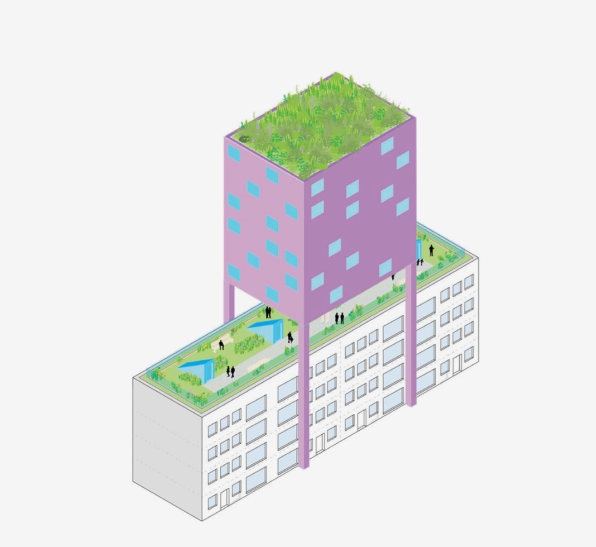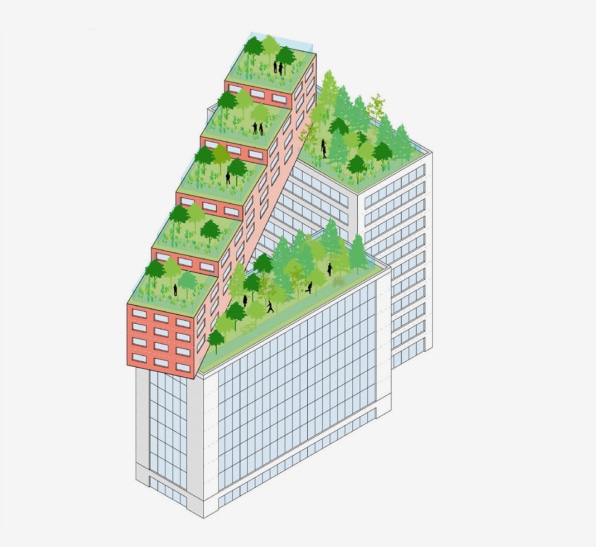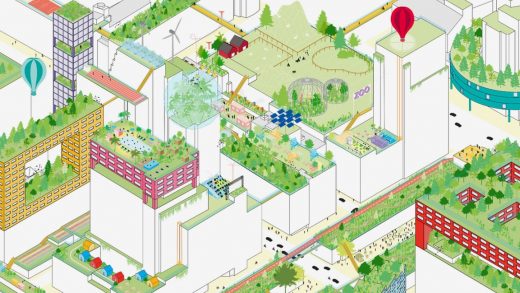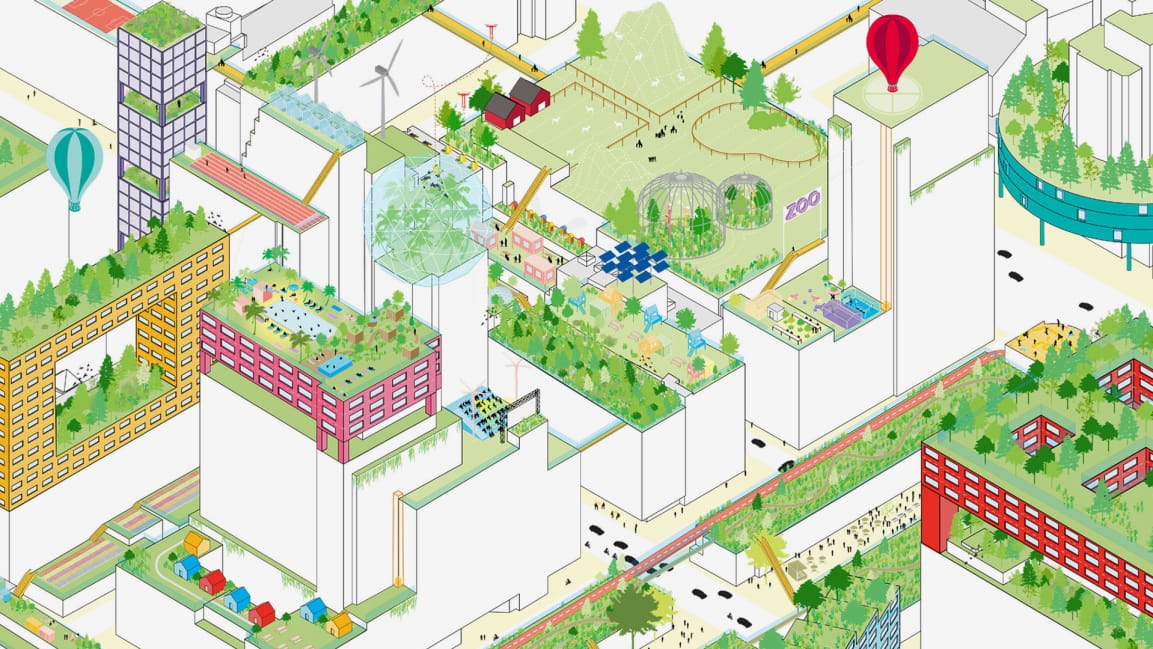100 ways to make better use of urban rooftops, from parks to tiny homes
On the rooftop of a hospital in the Dutch city of Rotterdam, patients can visit a small orchard filled with fruit trees. A neighboring art museum has a rooftop forest planted with birch trees that were raised to survive at a slightly higher altitude. Nearby, a nearly 4,000-foot-long building is topped with a park that has vegetable gardens, picnickers, and grazing sheep. On other roofs in the city, pilot projects are testing the potential of tiny homes.
The city is a pioneer in finding new uses for a part of urban space that’s often ignored. In a new book called Rooftop Catalogue, Rotterdam-based architecture firm MVRDV and the organization behind an annual “rooftop day” festival in the city explore more potential ways to transform roofs and how the whole rooftop landscape could change.

“Rooftop use could make a huge contribution to the densification of the city—and it could also prevent us from building more on the outskirts of our cities,” Winy Maas, cofounder of MVRDV, said in an interview included in the book. In Rotterdam, the team calculated that if 10% of the city’s roofs were used for housing, it could create 15,000 comfortably sized small homes. Like backyard houses, small rooftop homes can help add new residential space to neighborhoods that are already built up. Roofs could also be used to extend space from existing apartments or for adding new coworking spaces to apartment buildings.
Adding green space to roofs can help counter the urban heat island effect—the fact that cities are hotter than rural areas because of the heat radiating off of streets, parking lots, and buildings. Rooftop gardens can also support biodiversity, help reduce air pollution, and absorb rainwater in storms. The book looks at a range of designs, like a “silent garden” that gives residents an oasis from urban noise; an urban farm; and a “green monument” (an abandoned building that’s allowed to be overtaken by nature, including on the roof).

Other concepts range from simple—such as a rooftop space for outdoor yoga or a dog park or community workshop spaces for DIY projects—to the absurd, like a roller coaster that starts on a roof and then wraps around a skyscraper. The designers also suggest using roofs for bike parking, as shortcuts for pedestrians, or as potential drone delivery stations.
Of course, roofs can also be covered with solar panels. But the book argues for a diversity of uses. (In some cases, different uses could happen on the same roof; green space can help keep solar panels cooler and operating more efficiently, for example.) And even if fewer than half of the roofs in Rotterdam were used for solar power, the authors calculate, that would be enough to power a million households.
There are challenges, including the fact that most buildings need to be retrofitted to handle excess weight on the roof. But cities should be thinking about how to encourage new uses, the designers say. “I think we need a new Building Code, or rather a Rooftop Code,” Maas says in the book. “You should be able to stack the four elements—water, greenery, energy, and population—on top of each other, like a sandwich.”
(26)



